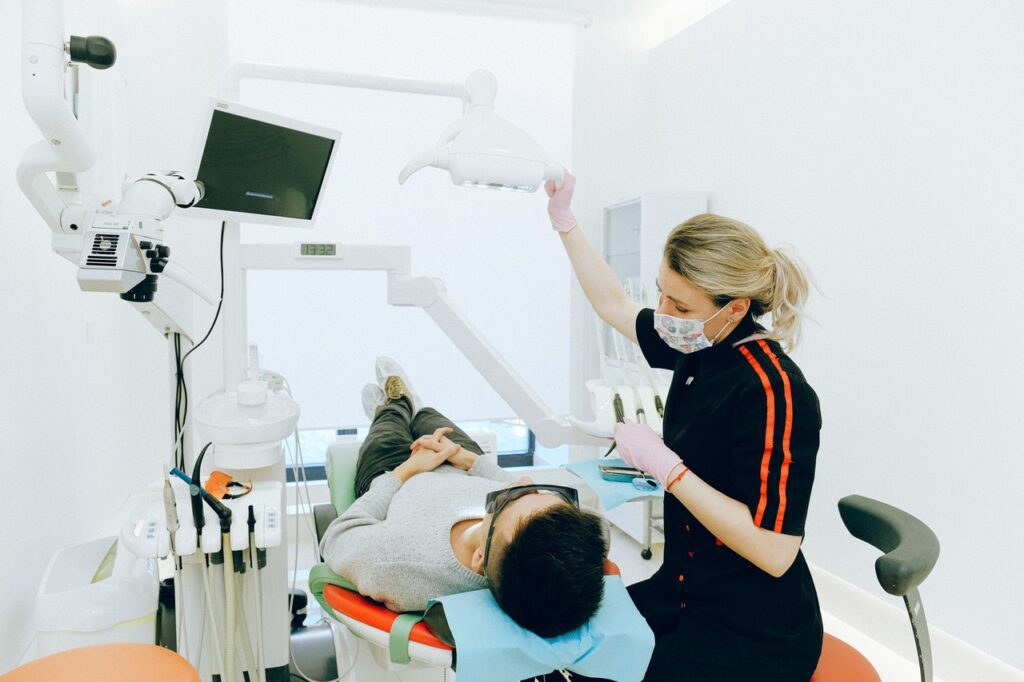Inlays and Onlays
Custom-Fit Solutions for Tooth Damage and Decay in Norwalk, California


Custom-Fit Solutions for Tooth Damage and Decay in Norwalk, California

When more than half of a tooth’s biting surface is damaged, a dental inlay or onlay can be a great fix. These repairs are nearly identical and involve the same procedure. Both inlays and onlays are made of porcelain, composite resin, or gold and are attached to the damaged or misshapen sections of teeth. An inlay is much like a typical dental filling and is used inside the tips of the tooth. An onlay is similar but a little more extensive, as the reconstruction extends over one or more tips of the damaged tooth. An easy way to remember the difference is that an inlay lies inside a tooth’s tip, while an onlay lies over one or more tips.
Regardless of which of the two methods your dentist recommends (inlay or onlay), two appointments are needed to complete the procedure. During the first appointment, the damaged or decaying section is removed. Then, to ensure the fit is correct, the dentist will take an oral cavity impression of the tooth and send it to a dental lab for fabrication. A temporary sealant is securely placed on the tooth, and the patient is sent home. Restrictions on what the patient can eat, drink, or do are minimal, but the patient should be aware that the temporary seal is not as strong or durable as their natural teeth.
At the second appointment, the dentist will remove the temporary sealant and test the newly fabricated inlay or onlay to ensure the correct fit. If the fit feels natural and accurate, the dentist will attach the piece to the tooth using resin and buff it to a smooth, natural finish. The finished look is completely natural and matches the patient’s teeth.

In cases where damage to a tooth is not significant enough to require the placement of a dental crown, inlays offer an ideal alternative. Whereas traditional fillings reduce a tooth’s durability by up to 50%, inlays can increase a tooth’s durability by up to 75%. This strengthening factor is because the materials are bonded directly onto the tooth using special high-strength resins. As a result, inlays and onlays can last for up to 30 years.
In cases where damage to a tooth is not significant enough to require the placement of a dental crown, inlays offer an ideal alternative. Whereas traditional fillings reduce a tooth’s durability by up to 50%, inlays can increase a tooth’s durability by up to 75%. This strengthening factor is because the materials are bonded directly onto the tooth using special high-strength resins. As a result, inlays and onlays can last for up to 30 years.
When compared with typical tooth fillings, inlays have the following benefits:
While inlays are a popular restorative and cosmetic procedure, patients should be aware of a few potential drawbacks. These include:
We don’t recommend inlays and onlays for patients with poor oral hygiene habits or patients under 16. Young children’s teeth are still developing, and it may be difficult for a child to cope with a lengthy, invasive dental procedure. The fitting of the mold to make the inlay is a somewhat uncomfortable process. Patients should be able to tolerate an oral cavity impression.
If you have more questions about inlays and onlays, contact us at Alondra Dental Care. We’ll gladly explain all of the options available to you for restoring and repairing damaged teeth. Make an appointment to meet with our experienced cosmetic dental staff. Our goal is to leave you with a strong, confident smile.
An inlay and an onlay are restorations that can help repair decayed or damaged teeth by being placed in a tooth’s center (inlay) or over a large area to address tooth damage extending beyond a tooth’s center (onlay). These restorations can help protect your pearly whites from additional decay and enhance their appearance.
An onlay covers only your tooth’s raised points, while a crown covers your tooth’s entire visible section above your gum line. Since onlays are smaller and more conservative, they blend with your natural tooth color seamlessly. Meanwhile, crowns might be easier to notice since they provide full tooth coverage, as they’re used to address major dental problems like extensive decay, teeth treated with root canal therapy, and fractures.
A filling is designed to fill a moderate to small cavity and is placed directly into a tooth in one dental visit. Meanwhile, inlays/onlays are recommended when cavities are too big for simple fillings. Filling procedures are quick and easy, but fillings might be less durable than inlays/onlays.